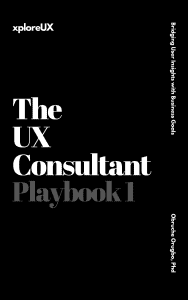
Financial Sector Success is increasingly influenced by how well institutions incorporate user-focused design into their digital and physical offerings. Clients now expect services to be accessible, straightforward, and engaging. Providing a frictionless interaction is more than a passing requirement; it can serve as a crucial advantage for banks, insurers, and other financial providers. This article examines how an effective User Experience (UX) strategy can create positive outcomes, with real-world examples demonstrating how certain organisations have achieved measurable goals by prioritising users’ needs.
Financial institutions operate in a highly competitive environment. To maintain loyalty, they must offer seamless online journeys and customer support that builds trust. When a platform is unintuitive, or a product is poorly designed, consumers will seek alternatives that are simpler to manage. An institution that gives prime importance to usability not only boosts its brand reputation but also saves on support costs.
Elevating Customer Satisfaction
A robust UX strategy encourages clear navigation, accessible features, and coherent visuals. Satisfaction arises when users can achieve their objectives quickly, whether signing up for a new service or settling a bill. By keeping users at the forefront, companies support Financial Sector Success and reinforce their standing in the market.
Building Trust Through Transparency
Trust is an essential element in every financial transaction. With the prevalence of digital services, clients need to be confident their transactions and personal data are handled responsibly. A transparent process that clearly outlines fees, procedures, and data privacy guidelines can make customers more inclined to remain loyal. Indeed, a carefully constructed UX helps reduce confusion and clarifies terms, further contributing to Financial Sector Success .
A well-crafted UX plan emphasises clarity, consistency, personalisation, and adaptability. Balancing these components allows an institution to evolve with shifting user expectations, ensuring sustained Financial Sector Success . Below are some of the most critical factors.
Usability and Accessibility
User-friendly design means minimising unnecessary steps and making processes intuitive. A platform should be navigable by all clients, including those with disabilities who use assistive technology. High-quality UX ensures the platform remains operational on devices of varying sizes and specifications. These considerations prevent frustration and encourage repeated engagement.
Personalisation and Relevance
A sense of personal connection can profoundly affect how customers view a service. By examining user data responsibly, institutions can offer targeted recommendations, investment insights, or savings advice. The more a platform recognises personal circumstances, the more a user feels understood and valued.
Speed and Efficiency
No client enjoys a complex or lengthy online process, especially during time-sensitive financial tasks. Speed is often a deciding factor in whether a user remains engaged or looks elsewhere. Streamlined processes highlight the institution’s respect for customers’ time, thereby promoting Financial Sector Success .
Visual Consistency and Branding
Maintaining consistent design elements across websites, apps, and physical branches supports brand recognition. Each colour, icon, and font choice should reflect the institution’s values and make users feel at ease. Organisations that invest in coherent aesthetics benefit from user confidence, which eventually translates to better retention rates.
Regular Testing and Iteration
Developing a strong UX strategy is not a one-off task. It demands continuous testing and reworking. Institutions that periodically gather feedback and analyse real user journeys gain a clearer idea of what works. By acting promptly on insights, they can maintain progress toward Financial Sector Success .
Real-life examples provide evidence of the connection between focused UX strategies and improved results. Below are three case studies that show how prioritising user needs can foster Financial Sector Success . Using fake names.
Bank X: Simplifying Online Onboarding
Bank X, a mid-sized organisation aiming to attract younger customers, noticed a recurring issue: a large number of potential clients were abandoning the account creation process. To address this, the bank collaborated with a dedicated UX design team.
Challenge: The application form was lengthy, with confusing language and multiple redundant steps. Many found it tedious and gave up before completing it.
UX Strategies:
1. Reduction of Steps: The bank consolidated unnecessary fields and grouped similar data requests.
2. Clear Language: Technical jargon was replaced with simpler terms so that potential clients could quickly grasp the requirements.
3. Guided Tips: Real-time guidance appeared on each page, making it easier for applicants to understand what to enter.
Outcome: Applications soared by 40%, and completion rates significantly improved. This transformation contributed to Financial Sector Success by boosting revenue from new accounts and raising the bank’s profile among younger demographics.
Insurance : Personalising Customer Portals
Insurance Y was losing policyholders to competitors that provided more transparent premium adjustments and simpler online claim submissions. Determined to reverse the trend, the insurer upgraded its digital portal.
Challenge: The original portal was cluttered with excessive information. Users struggled to find relevant details, leading to frustration and a surge in support calls.
UX Strategies:
1. Data-Driven Personalisation: Clients could log in and view tailored policy details, claim history, and relevant renewal notices without wading through unrelated content.
2. Speedy Claims Submission: The portal’s interface was restructured to focus on minimal steps for filing a claim, with progress indicators for clarity.
3. Mobile Optimisation: Given the surge in mobile usage, the interface was adapted to smaller screens, with touch-friendly controls.
Outcome: Policy renewal rates went up by 25%, and customer support calls decreased due to the portal’s user-friendly nature. By streamlining services, Insurance Y championed Financial Sector Success and secured a more committed customer base.
Brokerage Z: Enhanced Trading Experience
Brokerage Z wanted to draw enthusiastic amateur traders who often found financial markets intimidating. The brokerage’s goal was to build a trading app that combined powerful tools with a user-friendly approach.
Challenge: Many trading platforms can appear daunting. Users complained about complicated features and a lack of guidance when making trades.
UX Strategies:
1. Simplified Dashboard: Essential data, such as account balances, recent transactions, and major stock indices, appeared on a clean screen, freeing users from distractions.
2. Interactive Tutorials: The app offered educational modules illustrating basic and intermediate trading strategies, enabling novices to develop confidence.
3. Contextual Alerts: Real-time updates about market shifts came with brief explanations. Users then decided whether to ignore or act on the information.
Outcome: The platform quickly attracted over 200,000 new users, with retention rates showing a noticeable surge. The organisation celebrated Financial Sector Success by expanding market share and gaining a positive public image for helping beginners learn to trade confidently.
Designing a user-focused journey goes beyond visual appeal. It delves into refining processes, ensuring consistency, and applying feedback loops that continually measure performance. When these techniques are applied effectively, the results strengthen Financial Sector Success .
User Research
Examining how real people interact with a service is a basic requirement. Interviews, focus groups, surveys, and usage analytics paint a clearer picture of client preferences. By integrating frequent feedback cycles, organisations align their strategies with user behaviour more accurately.
Customer Journey Mapping
It helps to map each stage of a user’s interaction, from initial awareness to long-term loyalty. This method reveals pain points that lead to abandonment or frustration. By introducing improvements in those segments, companies foster Financial Sector Success .
Prototyping and Testing
A prototype doesn’t have to be polished. Even a low-fidelity design can reveal how users might navigate a new interface. Conducting multiple rounds of testing ensures that issues are identified early and corrected before a wide-scale rollout. This iterative approach leads to smoother experiences and reduced development costs.
Coordinated Teams
Good UX is the result of collaboration between designers, developers, marketers, and other relevant staff. This unified approach ensures brand consistency. Institutions that encourage cooperation benefit from more cohesive platforms, enhancing Financial Sector Success .
Thorough Documentation
Comprehensive records of guidelines, user personas, and design standards help maintain direction, even when new personnel join or existing teams face changes. Documented best practices allow for effortless scaling and ensure no vital information is lost.
Investing in UX without tracking results is unwise. Solid metrics and regular assessments reveal how close an institution is to meeting its objectives. A continuous evaluation cycle forms the backbone of Financial Sector Success .
Metrics that Matter
Conversion Rate: Indicates how many visitors complete desired actions, such as opening an account or buying a policy.
Time on Task: Measures how long it takes for users to accomplish a goal. Shorter times often reflect smoother, more efficient processes.
Drop-Off Points: Identifies where users exit. High drop-off rates in a particular step might signal issues with clarity or complexity.
Customer Satisfaction Scores (CSAT): Clients rate their experiences, offering a direct measure of perceived usability and satisfaction.
Qualitative Feedback
Numbers may be useful, but they only tell part of the story. Soliciting open-ended reviews, user stories, and in-app suggestions provides meaningful insights. This approach uncovers emotional factors such as trust or frustration, both of which can significantly affect Financial Sector Success .
Benchmarking Against Competitors
Financial institutions should also evaluate how their user experiences compare to rivals. Staying aware of industry standards helps an organisation identify areas where it might lag behind. Regular benchmarking secures up-to-date awareness of emerging trends.
Iterative Adjustments
Evaluation shouldn’t end once improvements are introduced. Regularly scheduled audits allow for more targeted enhancements. This cycle of adaptation ensures a user-focused design remains effective and propels Financial Sector Success over time.
The financial industry continues to evolve, particularly with digital channels playing an expanded role in everyday transactions. As customers become more tech-savvy, UX design must stay current. Below are key trends that will likely shape Financial Sector Success in the near future.
Voice and Conversational Interfaces
The popularity of voice assistants suggests that conversational interfaces will rise in significance. Clients might be able to interact with their accounts verbally, performing complex tasks using natural language prompts. This advancement can greatly boost accessibility and convenience.
Biometric Authentication
Security is paramount for financial services, and biometric solutions such as fingerprint scans or facial recognition add layers of protection. A well-integrated biometric approach not only enhances security but also streamlines login processes, saving time for the user.
Artificial Intelligence and Personalisation
Machine learning and AI-driven algorithms can analyse large sets of data to provide hyper-personalised recommendations. A platform might, for example, alert a user about unusual spending patterns or suggest ways to save on monthly bills. As AI evolves, so will the capacity to adapt services for greater relevance, contributing further to Financial Sector Success.
Augmented Reality (AR) Visualisations
Although still a niche technology in finance, AR has promise for conveying complex information in engaging ways. Imagine overlaying data on physical documents or viewing interactive 3D charts through a smartphone. Such innovations can make financial topics more accessible.
Inclusive Design and Ethics
Inclusivity is no longer optional. Institutions aiming for long-term growth must cater to the widest audience, respecting varied cultural backgrounds, physical abilities, and languages. Ethical considerations around data usage will also influence how users engage with digital services.
A streamlined, thoughtful UX strategy can act as a pivotal force in achieving Financial Sector Success . By observing user behaviours, simplifying processes, and constantly refining solutions, financial providers can cultivate customer loyalty in a constantly transforming market. Examples from Bank X, Insurance Y, and Brokerage Z highlight how targeted improvements can substantially influence key business metrics, from increased user sign-ups to reduced churn.
The path to better UX is iterative, necessitating regular evaluation and updates. Institutions that stay attuned to evolving consumer preferences—while embracing technological progress—will be better equipped to advance in a competitive industry. Delivering a frictionless, accessible experience is one of the finest ways to strengthen brand image and inspire trust. Ultimately, this leads to a more satisfied user base, strengthened market position, and enduring Financial Sector Success across a variety of services and channels.







